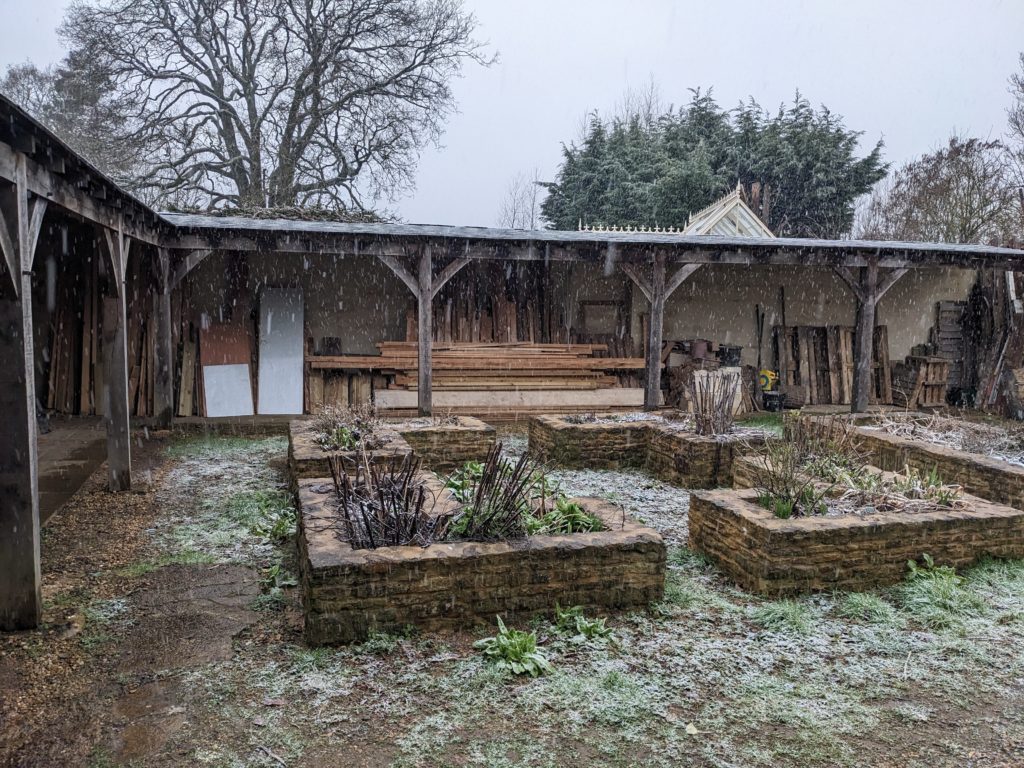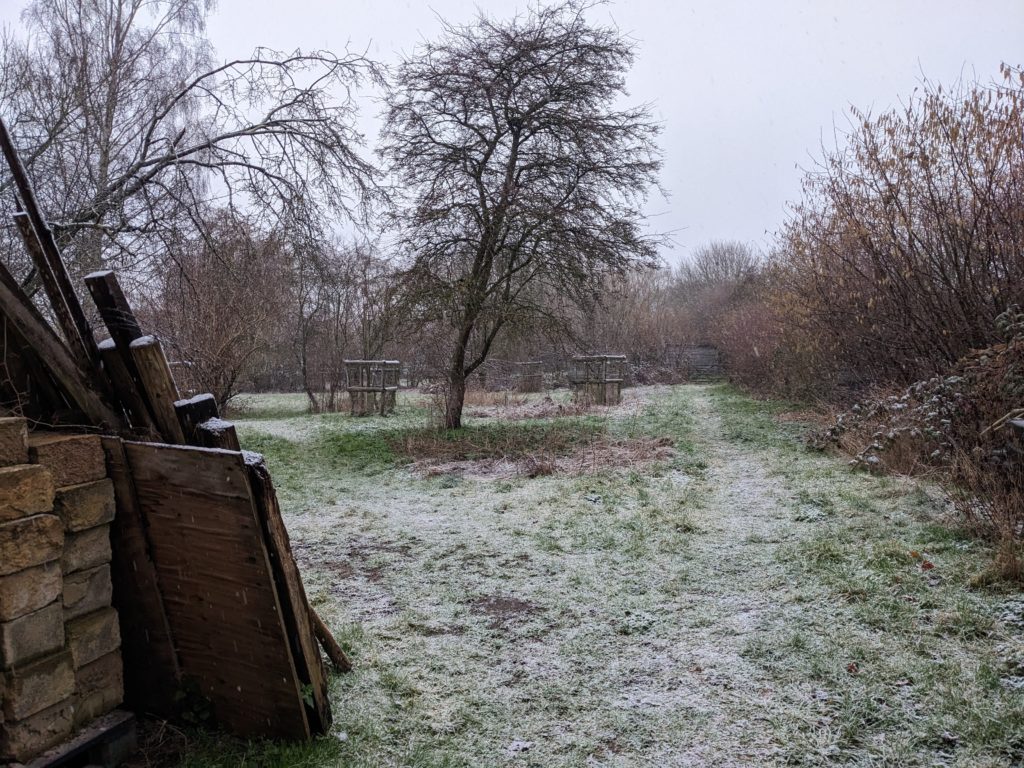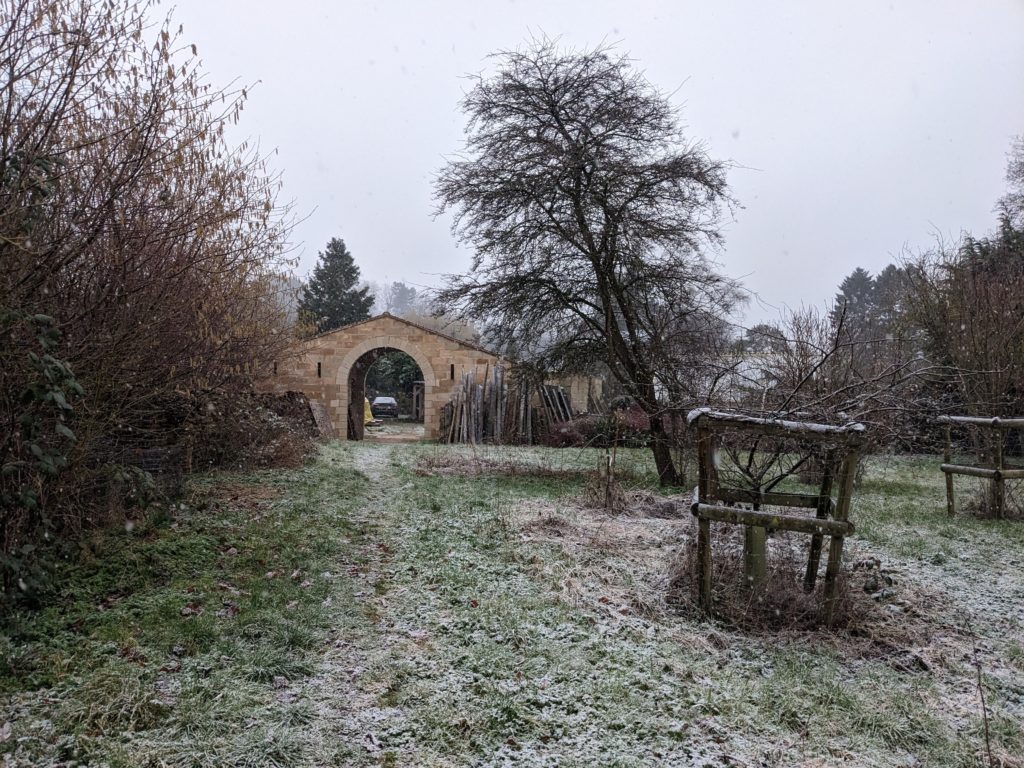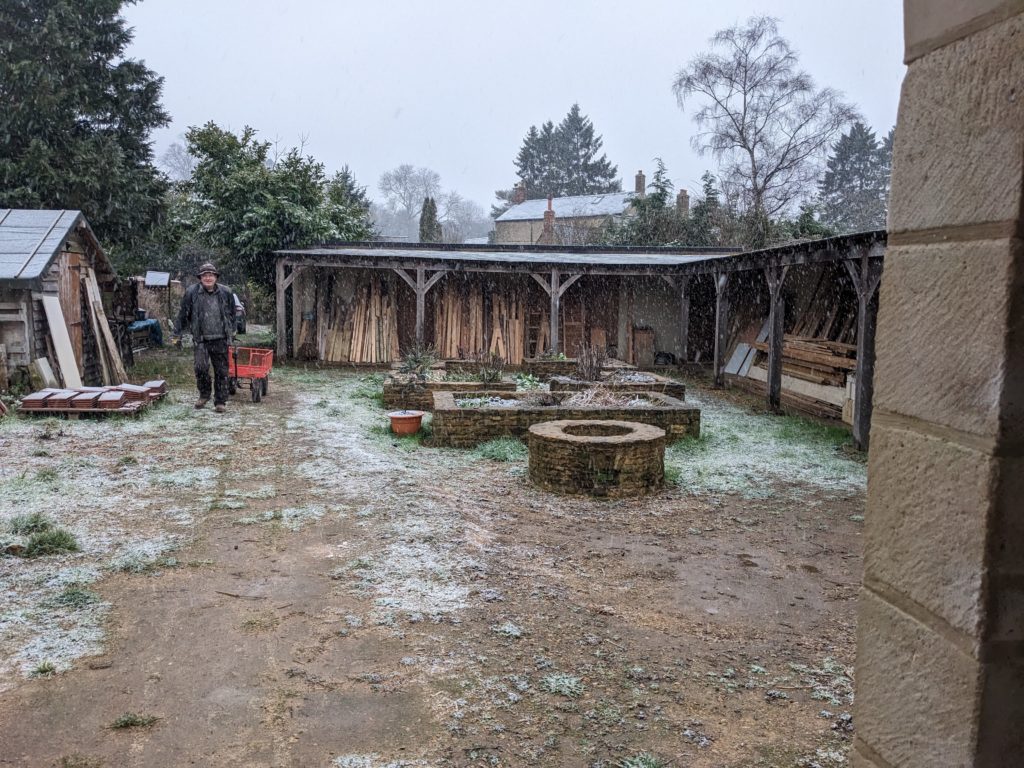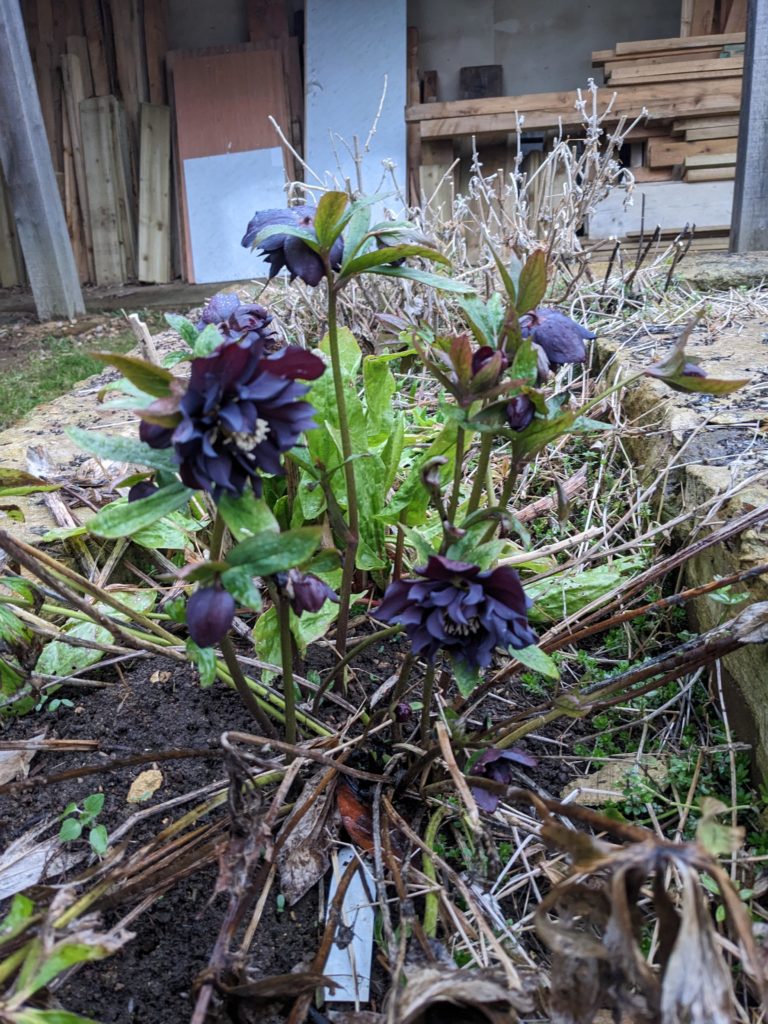
OMG it’s the end of the first quarter of 923, the equinox is past and here I am writing just after the Feast Day of that most learned and well-travelled princess Saint Hildelith, abbess of Barking. The black hellebore or “Christmas rose” is flowering in fine style. This is a plant of complex character, a winter flower bringing hope of spring, a medicine and a poison. I read that:
Treating intestinal worms lasted into the 18th century. The only drawback was that the patient might end up being killed together with the worms.
https://poisonousplants.ansci.cornell.edu/christmasrose/christmasrose.html
This comes as a surprise to me; I deliberately avoided planting what I knew to be toxic plants such as foxglove and aconite in the Rumwoldstow garden, but hellebore passed me by, partly because the hellebore is such a garden staple. So, erm, whoops! It is out of place in the food-and-flowers garden, and belongs in a medicinal garden with health warnings. It reinforces the message that you should be awfully cautious of eating random plants from the garden…
Moving swiftly on, here are some snaps of the light snowfall we had earlier in March, as viewed on a walk through Rumwoldstow to the end of the orchard and back.
